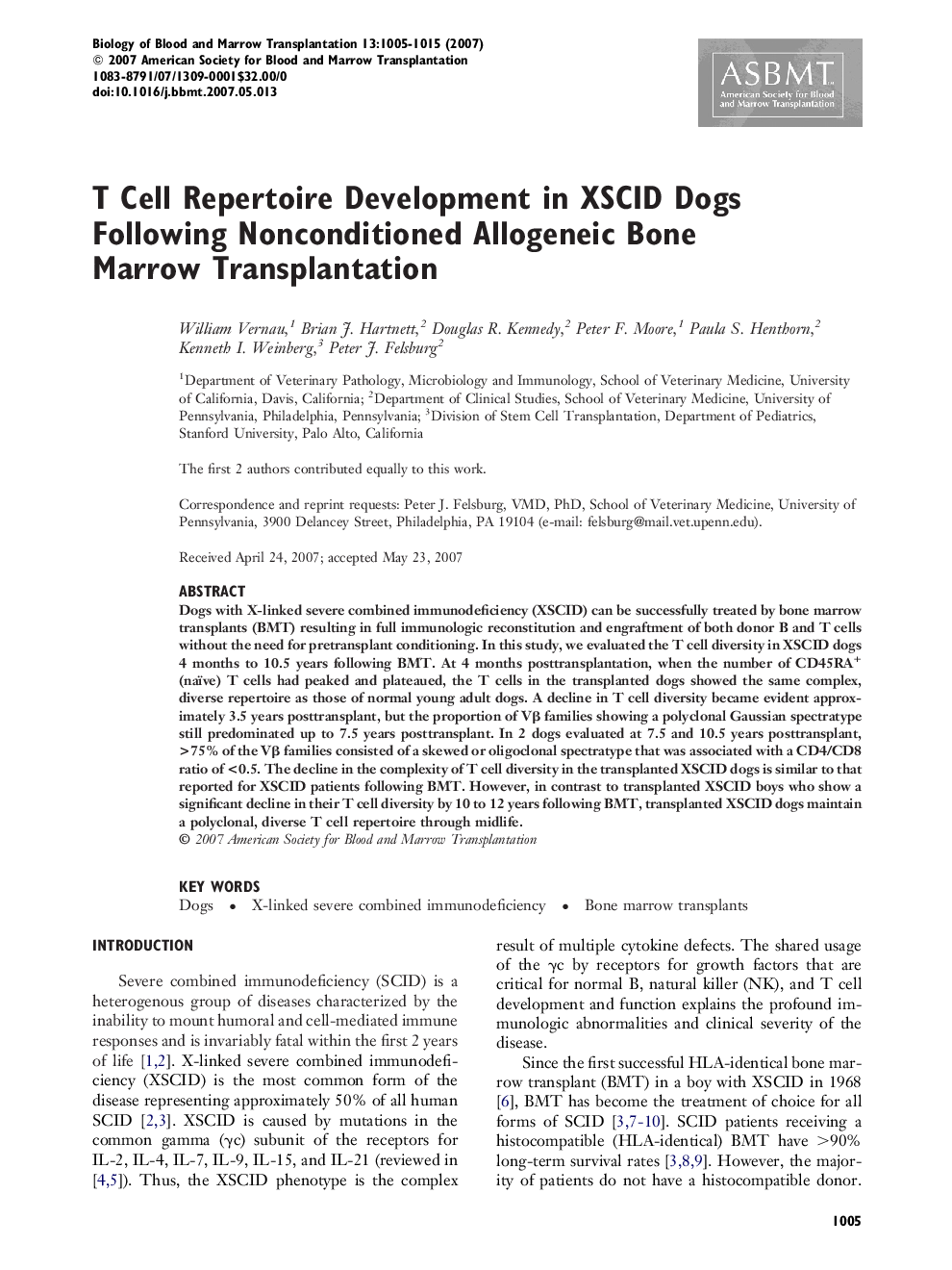| Article ID | Journal | Published Year | Pages | File Type |
|---|---|---|---|---|
| 2104978 | Biology of Blood and Marrow Transplantation | 2007 | 11 Pages |
Dogs with X-linked severe combined immunodeficiency (XSCID) can be successfully treated by bone marrow transplants (BMT) resulting in full immunologic reconstitution and engraftment of both donor B and T cells without the need for pretransplant conditioning. In this study, we evaluated the T cell diversity in XSCID dogs 4 months to 10.5 years following BMT. At 4 months posttransplantation, when the number of CD45RA+ (naïve) T cells had peaked and plateaued, the T cells in the transplanted dogs showed the same complex, diverse repertoire as those of normal young adult dogs. A decline in T cell diversity became evident approximately 3.5 years posttransplant, but the proportion of Vβ families showing a polyclonal Gaussian spectratype still predominated up to 7.5 years posttransplant. In 2 dogs evaluated at 7.5 and 10.5 years posttransplant, >75% of the Vβ families consisted of a skewed or oligoclonal spectratype that was associated with a CD4/CD8 ratio of <0.5. The decline in the complexity of T cell diversity in the transplanted XSCID dogs is similar to that reported for XSCID patients following BMT. However, in contrast to transplanted XSCID boys who show a significant decline in their T cell diversity by 10 to 12 years following BMT, transplanted XSCID dogs maintain a polyclonal, diverse T cell repertoire through midlife.
